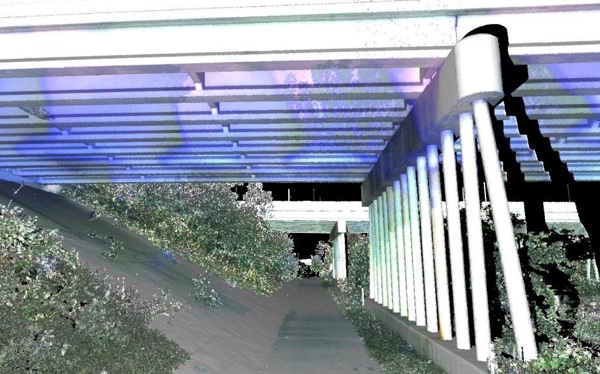Exploring Reality Computing for Civil Infrastructure
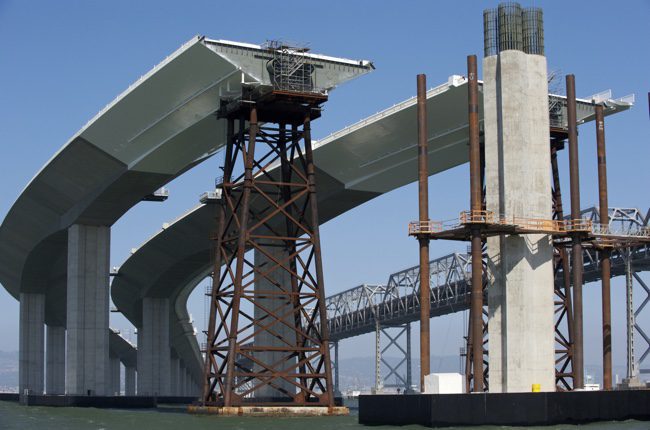
New Reality Computing technologies that capture the physical world digitally and deliver digital information physically are changing the design, production, and management of products or projects—from cars to factories to highways. Civil infrastructure projects are particularly well suited to Reality Computing, due to their size, scope, and inherent relationship to the physical world around them. In fact, aspects of Reality Computing are already used by many infrastructure design and construction teams.
This paper helps engineers, contractors, and owners involved in civil infrastructure projects understand the fundamentals of Reality Computing and benefits of using Reality Computing on infrastructure projects.
What is Reality Computing?
The use of digital project models and information is a well-established practice for civil infrastructure design. However, design constitutes only the middle part of an infrastructure project, which starts with documenting existing conditions and ends with delivering the project. Reality Computing is an emerging technology category that focuses on the integration of digital design environments and the physical world—enabling the direct capture of spatial information from the physical world, and direct delivery of digital information into the physical world.
Why is it important?
Any design process must take into account the physical context of the design. Wire harnesses must be mounted within a car’s structural frame. A building’s MEP systems must snake through interstitial spaces. But the design context and the size of most infrastructure projects set them apart from other design processes. The root origin of the word ‘infra’ is a Latin prefix meaning below or beneath, which points at the importance of Reality Computing for civil engineering. Infrastructure projects rest on the physical world beneath us. Their design context includes the physical world around us and, when constructed, affect the physical world in ways other projects and products do not. Existing conditions (such as surrounding landscape, existing structures, communities, and so forth) have to be accounted for before design can even begin. And for many projects, construction will occur in highly constrained physical environments.
Therefore, the integration of the physical world into the digital design and delivery process is particularly important for civil infrastructure projects. Reality Computing technologies help civil engineers digitally capture existing conditions of the area below and around a proposed infrastructure project, digitally design the project in the context of that setting, and digitally reshape existing terrain and build new infrastructure. For example:
Capture: The physical world can be digitally captured using technologies such as 3D laser scanning to accurately record the physical world.
Compute: Software tools are used to both process and integrate reality data directly into design and construction workflows. These tools connect the digital capture of the physical world (capture) and the physical delivery of the digital world (create).
Create: Digital design information can be materialized using technologies ranging from machine-controlled grading to prefabrication. Digital designs can also be presented visually in the context of the surrounding environment.
Capture
For civil infrastructure projects, the physical world is usually digitally captured using photogrammetry, ground penetrating radar, or 3D laser scanning. New capture capabilities are being introduced in ever more varied devices, such as scanners or digital cameras mounted on drones.
Some of these data capture techniques have been used for decades to produce high-resolution models, but were cost prohibitive for most projects. In the past several years, new technology (in the form of both hardware and software) makes capturing the physical world less expensive and time consuming. For example, 3D laser scanning (also called LiDAR) is a relatively new technology that is quickly becoming an infrastructure industry standard for collecting data. The accuracy and sheer quantity of the data, and the speed at which it can be gathered, is opening up new possibilities in a sector that has been technologically stagnant for many years. Though many design and construction firms outsource data capture services, there is a growing trend for insourcing these capabilities as the technology becomes more accessible and no longer requires specialty firms or training.
Existing conditions are often captured using a variety of technologies. For example, to document the existing conditions of an airport, the runways and surrounding terrain could be captured with laser scans, supplemented by traditional survey information for positional accuracy. Digital photography and photogrammetry software could be used to document the airport terminal and other existing structures.
In addition, the power of cloud computing and social networking helps firms process and share existing conditions data more quickly and easily. This allows project teams to access and incorporate captured reality data from multiple sources, and combine that data with other existing spatial or geographical information such as GIS data, ground survey information, and digital terrain models to more completely reflect existing conditions.
3D Laser Scanning
There is a variety of 3D laser scanning methods. For civil infrastructure projects, the most common are airborne laser scanning, mobile, and terrestrial.
- Airborne laser scanning is used to capture 3D data for large areas, such as urban areas, industrial plants, or large transportation or land development projects. High-altitude capture typically involves sensors mounted on fixed wing aircraft, along with equipment to capture and calculate additional data about the movement of the plane to compensate for the motion. Due to the height, high-altitude 3D scanning is less accurate than other laser scanning techniques; horizontal positions can be off by as much as a meter. Nevertheless, for large-scale topography, it is faster and more accurate when compared to other methods, and the scans can be used to capture a variety of information including terrain, building locations, vegetation, utilities, roadways, and water features.Low-altitude capture is similar to high-altitude, except that helicopters or drones are typically used, and the resulting data is more accurate. Low-altitude scanning is often used on large surveys of transportation or utility corridors. For example, a low-altitude airborne survey of a highway could be accurate enough for repaving plans or the design of new features like expanded shoulders.
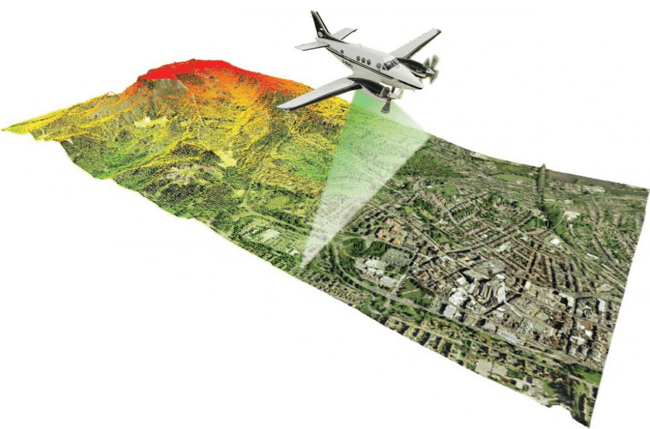
Figure 2. 3D laser scanning is quickly becoming an infrastructure industry standard for collecting data. Airborne laser scanning is used to capture 3D data for large areas, such as urban areas, industrial plants, or large transportation or land development projects.
- Mobile laser scanning systems use scanners mounted on moving platforms (such as vans or off-road vehicles). Like airborne scanning, these systems include equipment to calculate and compensate for the vehicle’s location and movement. These systems can quickly produce topographic surveys of drivable corridors. Most commonly used to capture data from a road, these systems can operate while traveling at highway speeds without exposing workers to traffic or requiring road/lane closures.
- Terrestrial laser scanning uses tripod or handheld scanners to capture information (both indoors and outdoors) about conventional topography, buildings, or smaller-scale infrastructure such as dams, small sections of roads, roadway intersections, or bridges.
Other Capture Methods
Digital photographs and photogrammetry can sometimes be a viable alternative to mobile or terrestrial laser scanning. Close-range or aerial photogrammetry can be a faster, less-expensive capture method for smaller scale civil infrastructure projects, such as bridges and roadway intersections.
Underground scanning using ground penetrating radar (GPR) and thermal imaging can also be used to capture existing conditions in the area of infrastructure projects. These methods can be used to locate buried structures, map underground utility lines, or detect other buried objects in the ground. GPR can also be used to non-destructively test the integrity of reinforced concrete structures, investigate concrete or masonry retaining walls or sea walls, and map the spacing of rebar.
Underwater laser scanning (with underwater laser scanners or sonar) are the primary methods for underwater surveying and inspection. Sonar is the more common technology, but underwater laser scanning provides more accurate measurements, which can be particularly useful for identifying cracks and erosion of underwater structures.
Safety and Access
Beyond providing very accurate existing conditions information, 3D laser scanning and these other methods of digital data capture can also be invaluable in assessing areas that are difficult or dangerous to access. For example, scanners mounted on drones can be used to capture the face of a dam or the topography of open pits, or inspect the condition of underground mines during construction or extraction to review safety or calculate volumes. For dangerous environments such as collapsed tunnels or mines, failed construction areas, high-voltage transmission stations, or radioactive sites, 3D laser scanners mounted on robots or drones can safely capture the physical conditions.
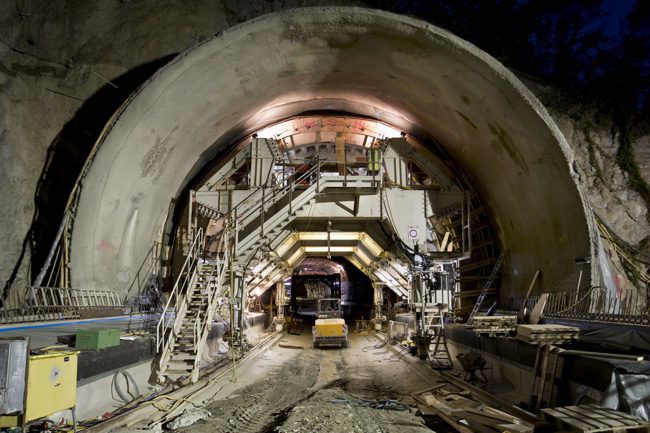
Figure 3. 3D laser scanning and other methods of digital data capture can be invaluable in assessing areas that are difficult or dangerous to access.
Working with Reality Data
Reality Computing relies on data that captures the rich detail and variety of the physical world. This format of this data is typically point clouds (from laser scanning) or high-density 3D meshes (from photogrammetry). This data is very different from the descriptive and analytic geometry commonly associated with CAD or BIM software tools. Some scanning technology captures both XYZ coordinates and color, producing point clouds that are visually easy to understand—much like a 3D panoramic photograph that you can walk through.
Compute
Existing conditions (in the form of captured reality data) can be brought into 3D modeling software to provide physical context during the design, construction, refurbishment, or management of infrastructure. This digital representation of existing conditions is used as a reference during design, to verify accuracy before and during construction, and to guide decisions for operations and maintenance.
The exactness of the reality-captured existing conditions data means that the information behind decision-making is current and accurate. Designs can be digitally tested and checked to help confirm ‘fit’ before actual construction. During construction, existing conditions as well as the already as-built portions of the projects can be coordinated with future construction. The use of reality data can help avoid field rework, redesigns, work stoppages, and in some cases even lawsuits—reducing overall project costs and schedules.
Project teams often combine a variety of data capture formats—including point clouds, meshes, satellite images, GIS data, and traditional survey information—based on the resolution or accuracy needed for the task, to provide a more complete view of a project. For example, existing digital terrain models, aerial photography, and GIS data alone might be sufficient to develop and present conceptual designs of a new water distribution project. But during detailed design and construction planning for the new water main, more accurate information is needed. High-definition ground-based scanning can be used to digitally represent existing conditions of the project area—developing the design of the new system using accurate terrain and above-ground utility data.
Captured reality data can also be used to analyze existing conditions of structures such as dams, bridges, tunnels for ongoing safety and/or maintenance assessments. Transportation departments for example, can use mobile LiDAR scanning with feature recognition software to survey highway bridges and extract measurements to identify sagging.
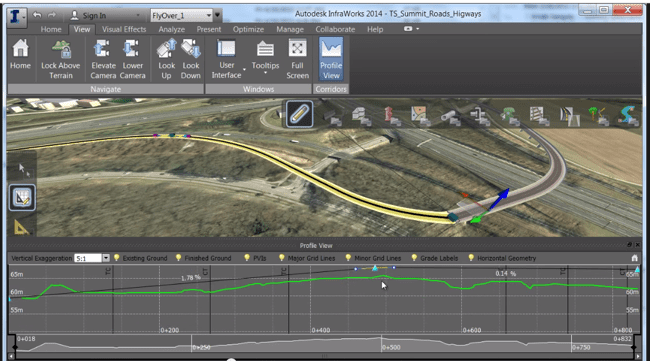
Figure 4. Reality-captured existing conditions data can be brought into 3D modeling software to provide physical context during the design, construction, refurbishment, or management of infrastructure.
Create
The final leg of Reality Computing is transferring captured and modified reality data back to the physical world. For civil infrastructure projects, this can be accomplished digitally (via project visualizations) or physically (with machine-controlled earthworks, prefabrication, and other digital construction techniques). Reality Computing can also be used during the construction process to document, monitor, and validate progress—measuring percentage of completion and comparing as-built work to its as-designed state.
Project visualizations
Reality data and design data can be combined to create very realistic project visualizations. These visualizations can support project communication, planning approvals, public outreach, and construction planning.
For example, during the design of San Francisco’s Presidio Parkway, the project team created numerous visualizations (both still images and animations) to support project communication with the client and other project stakeholders, and for public outreach and approval efforts. The team used a specialized animation and rendering software solution to create photorealistic visualizations, combining the roadway design data with multiple data sources representing existing conditions of the surrounding city and landscape. These visualizations illustrated how the various design options impacted key areas along the roadway—from landscaping at tunnel portals, to various lighting alternative designs in both day and night.
Physical realization
The use of Reality Computing for project realization, particularly GPS-guided grading, is becoming standard on transportation and other infrastructure projects. Other common uses of Reality Computing during infrastructure construction include:
- Using 3D scanned point clouds of existing conditions merged with design data to help project teams see how their designs fit and if the construction sequences are going to work within the context of the surrounding environment.
- Scanning in-place construction to help contractors and owners determine if the construction matches the design and, if not, analyze why. This helps project teams assess cost implications and make important decisions regarding future project construction.
- Comparing scans of in-place construction to design models can also be used for fact-based decisions regarding the release of funds to contractors (30 percent, 60 percent, etc.).
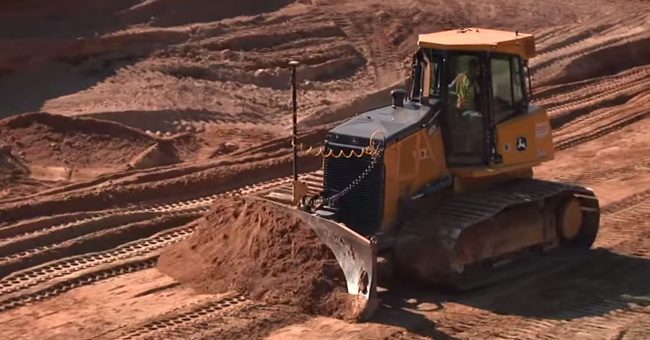
Figure 5. The use of Reality Computing for project realization, particularly GPS-guided grading, is becoming common on civil infrastructure projects. Image courtesy of Topcon.
Emerging uses of Reality Computing
New uses of Reality Computing technology on infrastructure projects are being discovered and implemented every day. Below are some examples of novel uses of Reality Computing.
Project teams are capturing as-built conditions and using that data to assess deterioration or aging of infrastructure for maintenance decisions. For example, a newly constructed bridge is scanned and archived. On a regular basis, the bridge is rescanned. The two point clouds are compared to detect any shifting or sagging. This information is used to proactively plan maintenance—without the need for manual, visual bridge inspections.
Laser scanning and point clouds are being used to assess quality and safety during construction. For example, during the reconstruction of airport runways, scans of the environs around runways under construction are being used to document compliance with specific rules about construction equipment and material near an active runway.
Underwater laser scanning and sonar technology is capturing existing conditions of underwater terrain in rivers, ports, and harbors. Project teams are using this information to create existing conditions models for dredging, for historical preservation, for new construction of docks and bridge piers, for installing underground utilities, or for constructing roadway tunnels.
Many infrastructure projects involve both above-ground, below-ground, above-water, and below-water elements. Using traditional underground or underwater survey methods, verifying locations for these existing conditions was challenging, expensive, and potentially dangerous. Today, companies are using unmanned vehicles to survey these difficult landscapes and aggregating that information in a single model.
For example, this technique has been particularly important for the Panama Canal expansion project, where new locks combined with the dredging and upgrading of ports will accommodate larger tankers. The first steps in the design process for these facilities included geophysical surveys to capture above and below-water existing conditions.
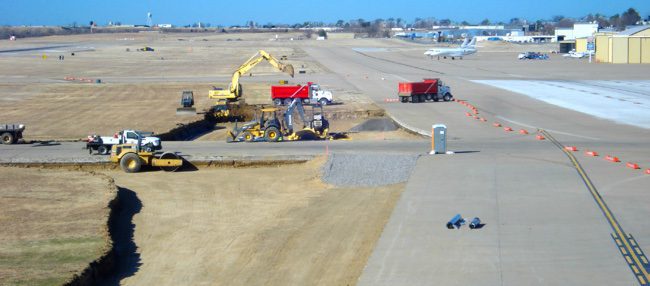
Figure 6. Increasingly, laser scanning and point clouds are being used to assess quality and safety during construction. For example, during the reconstruction of airport runways, scans of the environs around runways under construction are being used to document compliance with specific rules about construction equipment and material near an active runway. Image courtesy of Morrison-Shipley.
Reality Computing in Action
great lakes geomatics
While planning the replacement of the northbound bridge deck for the I-275 bridges spanning the Lower Branch River Rouge, the Michigan Department of Transportation (MDOT) needed to efficiently and accurately locate all of the cylindrical piers supporting the bridge decks while avoiding lane closures. The project team (including Great Lakes Geomatics) used laser scanners to capture point clouds of the piers, and then uploaded that information to their bridge design software to inform their design development. In addition, other survey points needed for design and construction were extracted from the laser scan after the initial survey, without having to return to the site. The point cloud was also used to verify exiting conditions prior to construction.
Conclusion
Reality Computing is particularly suited to civil infrastructure projects due to the size and scope of projects and the inevitable physical disruption of the surrounding area.
Hardware and software advances have resulted in the ability to quickly and cost-effectively capture information about the physical world. This information is being used to support and inform decision-making during planning, design, construction, and eventually operations—minimizing environmental disruption and benefitting project design firms, contractors, and infrastructure owners.
For more information about Reality Computing, visit our blog at http://realitycomputing.typepad.com.
Glossary of Terms
3D scanner: A device that analyses a real-world object or environment to collect data on its shape and possibly its appearance (e.g. color). The collected data can then be used to construct digital 3D models.
Digital terrain model or DTM (also digital elevation model or DEM): A topographic model of the bare earth terrain relief that can be manipulated by computer programs. A DTM file contains the spatial elevation data of the terrain in a digital format that is usually presented as a rectangular grid. Vegetation, buildings, and other man-made features are removed digitally, leaving just the underlying terrain.
Ground penetrating radar (GPR): A high-resolution nondestructive technique that is used to investigate the shallow subsurface of the earth, building materials, and roads and bridges. This method uses electromagnetic radiation in the microwave band (UHF/VHF frequencies) of the radio spectrum, and detects the reflected signals from subsurface structures.
Lidar (also LIDAR, LiDAR, or LADAR): A detection system that works on the principle of radar, but uses light from a laser instead of microwaves. The term is commonly used for aerial scanners.
Orthophotograph: An aerial photograph from which distortions owing to camera tilt and ground relief have been removed. Like a map, an orthophotograph has the same scale throughout the photo and can be used to measure true distances (unlike an uncorrected aerial photograph).
Photogrammetry: The science of making reliable measurements by the use of photographs, especially for determining the exact positions of surface points.
Point cloud: A data set consisting of points detected by a 3D scanning instrument, usually defined by Cartesian (XYZ) coordinates. Point clouds are intended to represent the external surface of an object or objects.
Reality Data: A high-resolution, non-geometrical data type that digitally represents 3D spatial, shape, or volumetric information about the physical world. Examples include point clouds, high-density meshes, voxel-based structures, sonar and traditional MRI and CAT scan slice data.
About Terry Bennett
Terry D. Bennett, LS LPF MRICS ENV SP LEED® AP, is the senior industry program manager and chief strategist for civil infrastructure at Autodesk. He is responsible for setting the company’s future vision and strategy for technology serving the planning, surveying, civil engineering and heavy construction industries, as well as cultivating and sustaining the firm’s relationships with strategic industry leaders and associations. Bennett has been a practicing professional, global author and lecturer for almost 30 years on the impact of technology to the infrastructure and urban planning, engineering, and construction industries focusing on sustainable approaches to urban infrastructure development. He currently serves as a Board Member of Harvard’s Graduate School of Design’s Sustainable Infrastructure Advisory Board, is a charter member of the Institute of Sustainable Infrastructure and a member of its economics committee, a council member on the Urban Land Institute’s Public Development and Infrastructure Council, and was a founding editorial board member of Rebuilding America’s Infrastructure Magazine.


